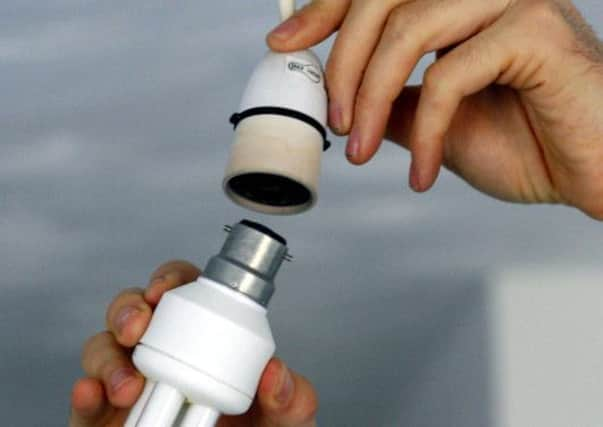Lightbulbs could unlock wi-fi crunch


Imagine if every lightbulb in the world could transmit data at ultrafast speeds? The global bandwidth shortage would be wiped out overnight! No more blackspots or buffering. With the world’s 20 billion light sources mobilised as communication devices, the possibilities would be stellar.
Street lamps could provide the next 5G and 6G networks – avoiding the need to build countless radio masts. A single light fitting in a room could connect multiple users to the internet – for free. And because light waves don’t pass through walls or interfere with equipment, wireless communication would be possible – and secure – where it isn’t currently. Aircraft cabins, hospitals, hazardous environments, underwater… in space.
Advertisement
Hide AdAdvertisement
Hide AdCars could use their lights to communicate and avoid collisions, intelligent traffic lights could transmit local congestion data and billions of smart household appliances from TVs to toasters could be instructed to gather data and save energy through internet-enabled light sources.
This “what if” scenario isn’t fantasy, but is possible today, using technology that I’ve been developing for more than ten years. We call it Li-Fi (light fidelity), a term I coined at the influential Technology Entertainment Design (TED) Global conference in 2011 with a talk entitled Wireless data from every light bulb.
The bottom line is that Li-Fi enables off-the-shelf LED (light emitting diode) lightbulbs to transmit data faster than the fastest wireless access technology available currently.
Li-Fi reaches these extremely fast speeds by harnessing the very high flicker rate of LEDs – which can achieve one billion on-off cycles per second versus the 100 cycles per second of a standard TV or computer monitor. The flicker rate is, therefore, invisible for the human eye, but detectable by an electronic device called a photodetector.
The result is that Li-Fi offers a staggering 10,000 times more unlicensed bandwidth – the “holy grail” for all communication systems – than the existing radio spectrum, which supports Wi-Fi. This is rapidly running out, because data volumes are ballooning by 70 to 80 per cent a year.
Ofcom, the industry regulator, has warned that the available radio spectrum will run out by 2020.
Since it was founded in 1583, the University of Edinburgh has been a crucible of invention, and is a member of Edinburgh Science Triangle, one of Europe’s top ten research and development locations.
The University of Edinburgh recognises the critical importance of this technology and has set up the Li-Fi Research asnd Development Centre to lead its global development.
Advertisement
Hide AdAdvertisement
Hide AdThe idea is to develop, patent and commercialise new technologies for the nearly unlimited Li-Fi applications, through channels such as licence agreements or new spin-out companies. Our partners already include National Instruments, the Texas-based producer of automated test equipment and virtual instrumentation software.
With proof of concept funding from Scottish Enterprise, we have also set up the spin-out company, pureLiFi, to commercialize components that will allow companies to integrate Li-Fi into their future product offerings. Our first product, Li-1st, is a transceiver modem that can connect to an off-the-shelf LED light fixture, and has been sold to some of the world’s largest companies.
The Li-Fi industry we’re pioneering is estimated to be worth at least $6 billion in the next five years, and there are huge opportunities across sectors including mobile communications, lighting, energy, healthcare, transport, smart factories, security and advertising.
While I’m admittedly biased, the benefits of Li-Fi are clear to see. As well as using existing infrastructure – avoiding the need for thousands of radio masts – Li-Fi is unregulated (free!) and secure, because your signal doesn’t leak through walls in the way that Wi-Fi does. It is also free from the health risks of Wi-Fi, which the World Health Organisation still deems to be potentially carcinogenic.
The opportunities are truly breathtaking – and I look forward to helping industry light the way for this exciting new technology.
• Professor Harald Haas is chair of mobile communications at the University of Edinburgh and co-founder of pureLiFi
SEE ALSO